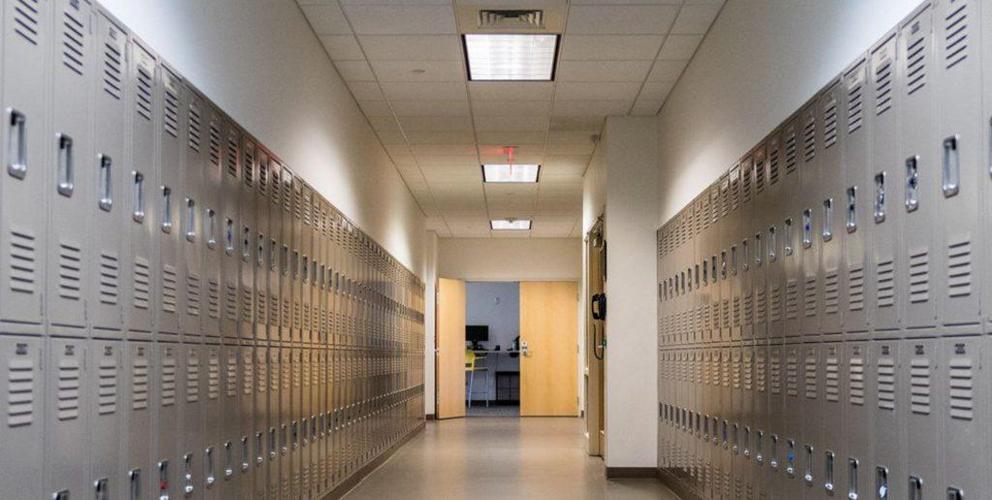In the wake of mass shootings, parents reconsider mass schooling
Parents who remove their children from the confines of the conventional classroom are not running away from reality. They are running towards it.
In the wake of recent tragic school shootings, anxious parents are contemplating homeschooling to protect their children. After February’s school shooting in Parkland, Florida, the Miami Herald reported that more parents were considering the homeschooling option. And after Friday’s disturbing school shooting in Santa Fe, Texas, a local ABC news affiliate in Alabama reported the increasing appeal of homeschooling.
“If I had the time, I would teach my kids myself, and I would know that they’re safe,” a father of four told ABC station, WAAY31. A public school teacher interviewed by the channel disagreed with the idea of homeschooling. According to the news story, the teacher “says resorting to homeschooling is teaching your children to run from reality.”
But that raises the question: Is compulsory mass schooling “reality”?
Public Schools Are Consuming More and More of Kids’ Time
Segregating children by age into increasingly restrictive, test-driven classrooms where they are forced by law to be unless a parent or caregiver liberates them is hardly “reality.” What’s worse is that young people are spending increasingly more time in this coercive “reality” than ever before.
For young children ages six to eight, schooling increased from an average of five hours a day in 1981-82 to an average of seven hours a day in 2002-03. And for today’s teens, schooling consumes much more of their time than it did for previous generations, seeping into summertime and other historically school-free periods. According to data from the U.S. Bureau of Labor Statistics, 42 percent of teens were enrolled in school during July 2016, compared to only 10 percent enrolled in July 1985.
In the case of teens, spending more time in school and school-like activities may be further separating them from the actual real world in which they previously came of age. As Business Insider reports: “Almost 60% of teens in 1979 had a job, compared to 34% in 2015.” Spending more time in the contrived reality of forced schooling and less time in authentic, multi-age, productive communities may be taking its toll on today’s youth.
Compulsory Mass Schooling Is Hurting Our Kids
New findings from researchers at Vanderbilt University show a disturbing correlation between time in school and suicidal thoughts and attempts by young people, which have been increasing over the past decade. Whereas most adults see suicide spikes in July and August, most kids see suicide dips in summer. Children’s suicidal tendencies appear strongest during the school year.
Boston College psychology professor Dr. Peter Gray believes that increasingly oppressive schooling is leading to serious psychological damage in some children. He writes on his blog at Psychology Today:
Children now often spend more time at school and at homework than their parents spend at their full-time jobs, and the work of schooling is often more burdensome and stress-inducing than that of a typical adult job. A century ago we came to the conclusion that full-time child labor was child abuse, so we outlawed it; but now school is the equivalent of full-time child labor. The increased time, tedium, and stress of schooling is bringing many kids to the breaking point or beyond, and more and more people are becoming aware of that. It can no longer be believed that schooling is a benign experience for children. The evidence that it induces pathology is overwhelming.”
Recent school shootings may be extreme examples of this rising school-induced pathology.
Choosing to Homeschool Isn’t “Running from Reality”
Instead of overreacting, parents who decide to remove their children from school to homeschool them may be acknowledging the disconnect between the inherent coercion of compulsory mass schooling and the freedom to live in the genuine world around us. Rather than sheltering their children, parents who select the homeschooling option may be endeavoring to widen their child’s community, broaden their experiences, and restore their emotional well-being.
Former New York State Teacher of the Year, John Taylor Gatto, writes in his book Dumbing Us Down: The Hidden Curriculum of Compulsory Schooling about his growing disillusionment with mass schooling:
I began to realize that the bells and the confinement, the crazy sequences, the age-segregation, the lack of privacy, the constant surveillance, and all the rest of the national curriculum of schooling were designed exactly as if someone had set out to prevent children from learning how to think and act, to coax them into addiction and dependent behavior.”
Parents who remove their children from the confines of the conventional classroom are not running away from reality. They are running towards it.
Kerry McDonald has a B.A. in Economics from Bowdoin and an M.Ed. in education policy from Harvard. She lives in Cambridge, Mass. with her husband and four never-been-schooled children. Follow her writing at Whole Family Learning. This article was sourced from FEE.org

